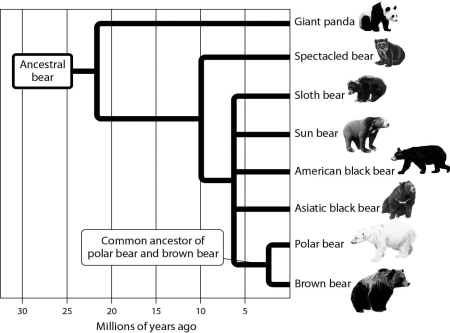A) study of cells
B) naming and classifying of species
C) study of organisms and their interaction with the environment
D) study of genes
F) A) and B)
Correct Answer

verified
Correct Answer
verified
Multiple Choice
A newly discovered multicellular organism obtains food by digesting dead organisms.Such an organism is most likely a member of the kingdom ________.
A) Plantae
B) Fungi
C) Protista
D) Animalia
F) A) and B)
Correct Answer

verified
Correct Answer
verified
Multiple Choice
Which of the following structures can perform all the activities required for life?
A) DNA molecules
B) cells
C) organelles
D) nuclei
F) A) and C)
Correct Answer

verified
Correct Answer
verified
Multiple Choice
Discovery science is primarily based on ________.
A) hypothesis testing
B) deduction
C) experimentation
D) observation
F) C) and D)
Correct Answer

verified
Correct Answer
verified
Multiple Choice
In what way(s) is the science of biology influencing and changing our culture?
A) by helping us understand the relevance of evolution to human health
B) by revealing how mutations in genes can lead to disease
C) by providing new tools for forensic investigations
D) all of the above
F) A) and B)
Correct Answer

verified
Correct Answer
verified
Multiple Choice
Which kingdom of Eukarya consists primarily of unicellular organisms?
A) Plantae
B) Bacteria
C) Fungi
D) Protista
F) B) and C)
Correct Answer

verified
Correct Answer
verified
Multiple Choice
Using the branching tree of life for bears depicted in the accompanying figure,choose from among the following bear species the one that is most distantly related to the sun bear. 
A) brown bear
B) sloth bear
C) spectacled bear
D) giant panda
F) None of the above
Correct Answer

verified
D
Correct Answer
verified
Multiple Choice
Members of the kingdom Plantae differ from members of the other kingdoms of Eukarya in that most members of the kingdom Plantae ________.
A) are decomposers
B) are unicellular
C) are consumers
D) produce their own food
F) C) and D)
Correct Answer

verified
Correct Answer
verified
Multiple Choice
Which of the following is the hypothesis of this case study?
A) Male collared lizards exhibit color variation.
B) Dull-colored males are less likely to be eaten by predators.
C) A function of male coloration is to attract females.
D) Males prefer brightly colored females.
F) C) and D)
Correct Answer

verified
C
Correct Answer
verified
Multiple Choice
What are eukaryotic genes composed of?
A) RNA
B) organelles
C) RNA and DNA
D) DNA
F) A) and D)
Correct Answer

verified
Correct Answer
verified
Multiple Choice
The DNA of a eukaryotic cell is found within the ________.
A) archaea
B) nucleus
C) prokaryotic cell
D) insulin
F) B) and D)
Correct Answer

verified
B
Correct Answer
verified
Multiple Choice
Which of the following conclusions can be drawn from the data?
A) Dull-colored females are more likely to choose dull-colored males.
B) Dull-colored males are likely to choose dull-colored females.
C) Brightly colored males are stronger and more fertile than dull-colored males
D) Females do not always choose brightly colored males.
F) C) and D)
Correct Answer

verified
Correct Answer
verified
Multiple Choice
Which of these would be a valid scientific hypothesis?
A) Human history is determined by a series of supernatural events.
B) Humans should help in the conservation of other animal species.
C) Humans are controlled by forces beyond our understanding.
D) Humans and bacteria share a common genetic code.
F) C) and D)
Correct Answer

verified
Correct Answer
verified
Multiple Choice
Information flow in biological systems is necessary for negative or regulative feedback to operate.Which of these examples does NOT involve flow of information providing feedback?
A) Heat receptors send signals to promote sweating.
B) Low blood sugar causes the liver to convert starch to sugar to be released in the blood.
C) Drought kills many trees.
D) Bacterial genes for breaking down lactose are activated in the presence of lactose.
F) A) and C)
Correct Answer

verified
Correct Answer
verified
Multiple Choice
What does "adaptation" mean in an evolutionary context?
A) the way an individual's body adjusts to its environment
B) the accumulation of favorable variations in a population over time
C) the ability of organisms to alter their appearance under changing environmental conditions
D) all of the above
F) All of the above
Correct Answer

verified
Correct Answer
verified
Multiple Choice
How does taxonomy assist biologists?
A) by providing easily remembered scientific names for organisms
B) by categorizing diverse items into smaller and smaller numbers of groups
C) by reducing life to its smallest common denominator,the cell
D) all of the above
F) A) and B)
Correct Answer

verified
Correct Answer
verified
Multiple Choice
Humans are composed of ________ cells.
A) bacterial
B) eukaryotic
C) plant
D) prokaryotic
F) A) and C)
Correct Answer

verified
Correct Answer
verified
Multiple Choice
What is the difference between discovery science and hypothesis-driven science?
A) Discovery science "discovers" new knowledge,whereas hypothesis-driven science does not.
B) Discovery science is based on deductive reasoning,whereas hypothesis-driven science is based on inductive reasoning.
C) Discovery science is mostly about describing nature,whereas hypothesis-driven science tries to explain nature.
D) Discovery science involves predictions about outcomes,whereas hypothesis-driven science involves tentative answers to specific questions.
F) A) and B)
Correct Answer

verified
Correct Answer
verified
Multiple Choice
More than half of all known species are ________.
A) plants
B) insects
C) bacteria
D) vertebrates
F) B) and D)
Correct Answer

verified
Correct Answer
verified
Multiple Choice
"Male collared lizards show considerable color variation." This is a(n) ________.
A) hypothesis
B) conclusion
C) observation
D) result
F) B) and D)
Correct Answer

verified
Correct Answer
verified
Showing 1 - 20 of 50
Related Exams